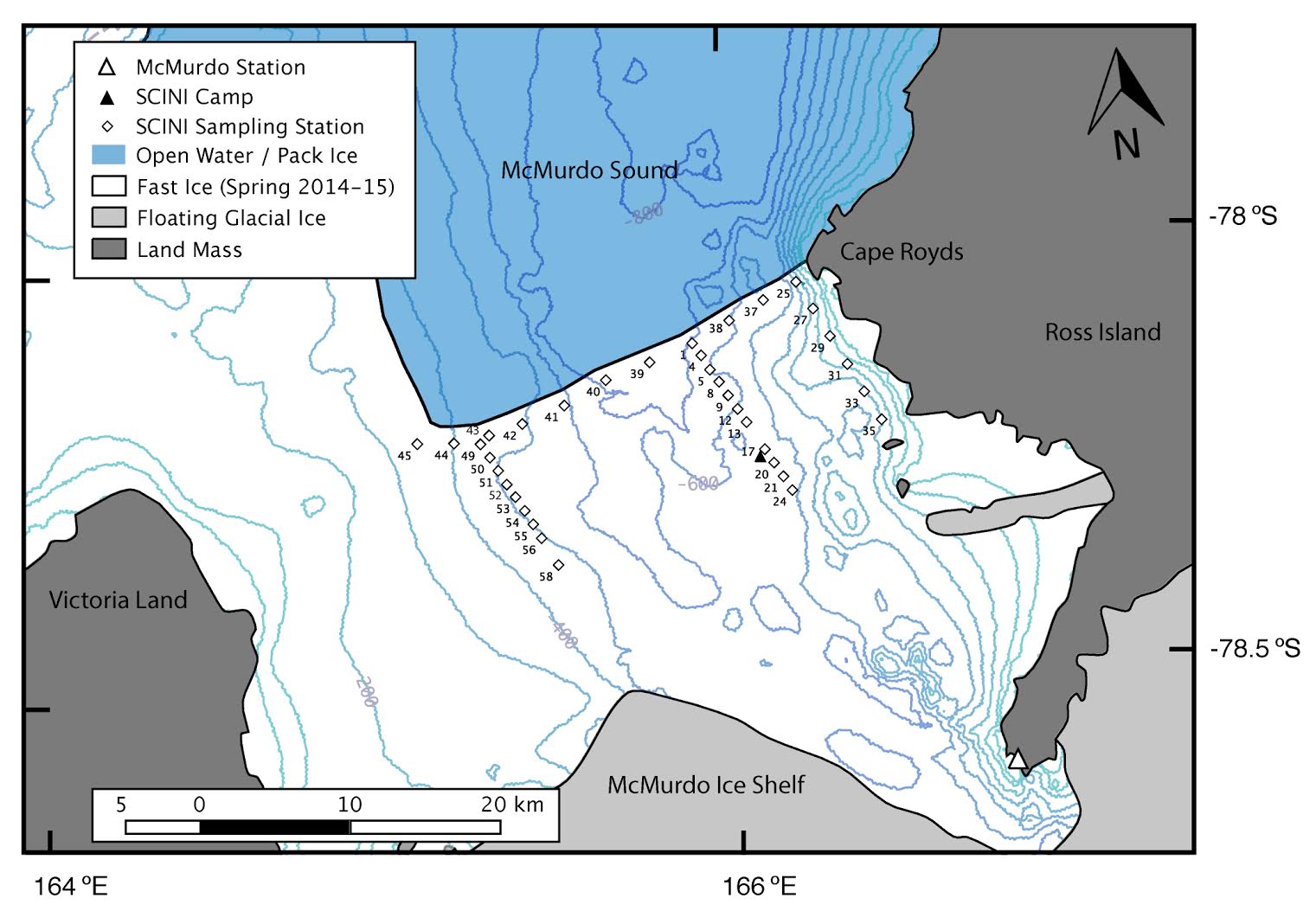Project: Food web dynamics in an intact ecosystem: the role of top predators in McMurdo Sound
Description
Extracted from the NSF award abstract:
The research project investigates the importance of top down forcing on pelagic food webs. The relatively pristine Ross Sea includes large populations of upper-level predators such as minke and killer whales, Adélie and Emperor penguins, and Antarctic toothfish. This project focuses on food web interactions of Adélie penguins, minke whales, and the fish-eating Ross Sea killer whales, all of which exert foraging pressure on their main prey, crystal krill (Euphausia cyrstallorophias) and silver fish (Pleuragramma antarcticum) in McMurdo Sound.
The investigators used a video- and acoustic-capable ROV, and standard biological and environmental sensors to quantify the abundance and distribution of phytoplankton, sea ice biota, prey, and relevant habitat data. The sampling area included 37 stations across an 30 x 15 km section of McMurdo Sound, stratified by distance from the ice edge as a proxy for air-breathing predator access. This study will be among the first to assess top-down forcing in the Ross Sea ecosystem and will form the basis for multidisciplinary studies in the future.
Map sampling stations

People
Principal Investigator: David G. Ainley
H.T. Harvey & Associates
Principal Investigator: Grant Ballard
Point Blue Conservation Science
Principal Investigator: Kendra L. Daly
University of South Florida (USF)
Principal Investigator: Stacy Kim
Moss Landing Marine Laboratories (MLML)
Contact: Stacy Kim
Moss Landing Marine Laboratories (MLML)
